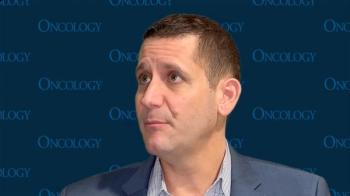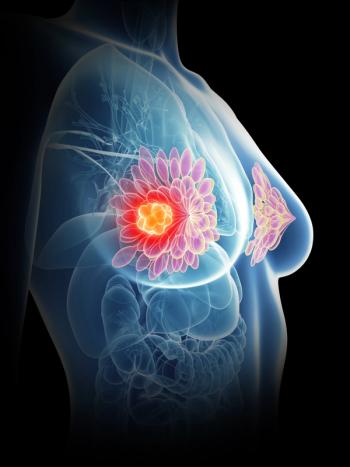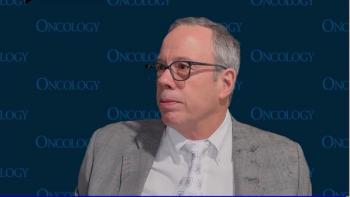
First-Line Tremelimumab ± Durvalumab Misses ORR End Point in Biliary Tract Cancer
Results from the phase 2 IMMUCHEC trial indicated that tremelimumab with or without durvalumab did not meet the primary end point of improved objective response rate vs chemotherapy in patients with treatment-naïve biliary tract cancer.
The primary end point of objective response rate (ORR) was not met when durvalumab (Imfinzi) plus or minus tremelimumab (Ticilimumab) was used to treat first-line biliary tract cancer vs chemotherapy alone, according to results from the phase 2 IMMUCHEC trial (NCT03473574).
The trial included 6 arms. Arm A (n = 21) received 1000 mg of gemcitabine on days 1 and 8, 1.5 g of durvalumab on day 1, and 75 mg of tremelimumab every 3 weeks. Arm B’s (n = 21) treatment consisted of gemcitabine, 25 mg/m2 of cisplatin on days 1 and 8, durvalumab, and tremelimumab. Both arm C (n = 21) and arm D (n =13) received gemcitabine and cisplatin. Moreover, arm D (n = 26) received gemcitabine, cisplatin, durvalumab, and tremelimumab, and arm E (n = 26) was given gemcitabine, cisplatin, and durvalumab.
The ORR in arm A was 4.6% (95% CI, 0.0012-0.284), 18.2% (95% CI, 0.05-0.040) in arm B, 28.6% (95% CI, 0.15-0.46) in arm C, 26.7% (95% CI, 0.12-0.46) in arm D, and 20.7% (95% CI, 0.08-0.40) in arm E.
In part A of the study, patients were randomly assigned 1:1:1 to arms A, B, and C, and in part B, patients were randomized 1:2:2 to arms C, D, and E. Patients were included in the trial if they were treatment-naïve with advanced, unresectable and/or metastatic cholangiocarcinoma and gallbladder carcinoma. Other inclusion criteria included measurable disease and an ECOG performance status of 0 or 1. The secondary end points included progression-free survival (PFS), overall survival (OS), duration of response (DOR), adverse effects (AEs), and health-related quality of life.
The median age in the intent-to-treat population was 63.5 years in arm A, 60 years in arms B and C, 62 years in arm D, and 61 years in arm E. Across all the treatment arms, the majority of patients were male, except for in arm B which had a female majority. In all arms, most patients had an ECOG performance status of 0. Most patients’ primary tumor site was intrahepatic followed by extrahepatic and gallbladder. Metastatic disease occurred in 72.7% of patients in arms A and B, 60.0% in arm C, 50.0% in arm D, and 44.8% in arm E.
The median DOR was 2.2 months in arm A, 7.18 months in arm B, 6.07 months in arm C, 6.78 months in arm D, and not reached in arm E.
In arm A, the median PFS was 2.75 months (95% CI, 2.23-4.5), 5.98 months (95% CI, 2.63-7.93) in arm B, 8.7 months (95% CI, 5.73-7.93) in arm C, 8.13 months (95% CI, 4.6-9.33) in arm D, and 5.97 months (95% CI, 2.8-8.43) in arm E. The median OS in arm A was 7.38 months (95% CI, 3.2-17.57), 12.32 months (95% CI, 4.53-20.83) in arm B, 16.93 months (95% CI, 9.37-20.7) in arm C, 22.73 months (95% CI, 9.53-25.1) in arm D, and 12.87 months (95% CI, 7.2-22.13) in arm E.
Treatment-emergent AEs (TEAEs) of grade 3 or higher occurred in 52.5% of patients in arm A, 70.0% in arm B, 50.0% in arm C, 55.2% in arm D, and 44.4% in arm E. TEAEs leading to death occurred in 8.7%, 5.0%, 3.3%, 3.4%, and 3.7% of patients in arms A, B, C, D, and E, respectively.
The results from this trial were presented at the
Reference
Vogel A, Boeck S, Waidmann O, et al. A randomized phase II trial of durvalumab and tremelIMUmab with gemcitabine or gemcitabine and cisplatin compared to gemcitabine and cisplatin in treatment-naïve patients with CHolangio- and gallbladdEr Carcinoma (IMMUCHEC). Annal Oncol. 2022;33(suppl 7):52MO. doi:10.1016/annonc/annonc1036
Newsletter
Stay up to date on recent advances in the multidisciplinary approach to cancer.


















































































